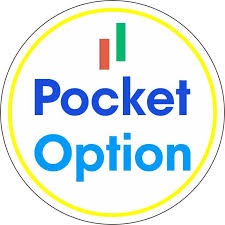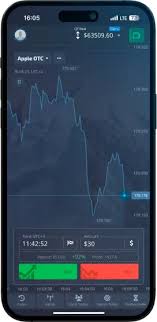
Master the Market: Developing a Medium-term Strategy Pocket Option
In today’s fast-paced digital trading world, many traders are on the lookout for strategies that not only maximize their profits but also provide a sustainable approach to trading. One such methodology is the Medium-term strategy Pocket Option среднесрочная стратегия Pocket Option. This article will delve into the importance of a medium-term strategy on Pocket Option and equip you with the essential tools and techniques needed to succeed.
Understanding Medium-term Trading
Medium-term trading refers to maintaining a position from a few days to several weeks, capitalizing on anticipated price movements. This strategy is advantageous for traders who may not have the time to engage in day trading but wish to trade more actively than long-term investors. Choosing the right indicators and understanding market conditions are pivotal for success in this realm.
Key Indicators for Medium-term Trading
To effectively engage in medium-term trading on Pocket Option, traders often rely on three primary indicators: RSI (Relative Strength Index), SMA (Simple Moving Average), and Stochastic Oscillator. Together, they offer a comprehensive view of market conditions, allowing traders to make informed decisions.
1. Relative Strength Index (RSI)

RSI is a momentum oscillator that measures the speed and change of price movements. The RSI is typically displayed on a scale from 0 to 100, where readings above 70 suggest an overbought condition and readings below 30 suggest an oversold condition. By incorporating RSI into your medium-term strategy, traders can identify potential reversal points, ensuring trades are made at optimal levels.
2. Simple Moving Average (SMA)
The Simple Moving Average (SMA) is a lagging indicator that smooths out price data by creating a constantly updated average price. For medium-term trading on Pocket Option, common periods for SMA are 50-days and 200-days. Traders often look for crossovers between different SMAs as potential buy or sell signals. The strategy often involves using a shorter-term SMA in conjunction with a longer-term SMA to identify trends.
3. Stochastic Oscillator
The Stochastic Oscillator compares a particular closing price to a range of prices over a certain period. This indicator generates values ranging from 0 to 100, typically using two lines: the %K line and the %D line. When the %K line crosses above the %D line in the oversold range (below 20), it’s considered a potential buy signal, whereas crossing below in the overbought range (above 80) signals a potential sell.
Integration of Indicators into a Cohesive Strategy
To form a robust medium-term strategy on Pocket Option, it’s important to integrate these indicators cohesively. A common practice is to look for confirmation across multiple indicators before executing a trade. For example, a trader might wait for the RSI to show an oversold condition while simultaneously observing a bullish crossover in the SMA. If the Stochastic Oscillator confirms this with a %K crossover above %D in a favorable zone, it may signal a strong buy opportunity.
Market Analysis and Timing

Alongside technical indicators, understanding market conditions is paramount for medium-term trading. Keeping abreast of economic news, earnings reports, and geopolitical events can impact market sentiments significantly. For example, a major central bank meeting could influence volatility, and thereby the performance of your trades. Timing your entries and exits based on market news can enhance your trading effectiveness.
Risk Management Practices
With the potential for high rewards, medium-term trading also comes with risks. Implementing effective risk management strategies is essential. Here are some practices that can safeguard your capital:
- Set Stop-Loss and Take-Profit Levels: Determine in advance the price levels at which you will exit losing trades or take profits on successful ones.
- Position Sizing: Decide how much of your total trading capital to allocate to a single trade, thus avoiding overexposure.
- Risk-to-Reward Ratio: Aim for a favorable risk-to-reward ratio, typically 1:2 or higher, which ensures potential profits outweigh potential losses.
Psychological Aspects of Trading
Trading psychology plays a critical role in trading success. Remain disciplined and stick to your strategy, regardless of market fluctuations. Fear and greed can lead to irrational decisions that can be detrimental to your account balance. Maintaining a clear head and following your predetermined rules is key to successful medium-term trading on Pocket Option.
Conclusion
Developing a medium-term strategy on Pocket Option involves a set of well-defined indicators, solid risk management practices, and an understanding of market psychology. By harnessing the collective power of RSI, SMA, and Stochastic indicators while staying informed about market conditions and maintaining disciplined trading habits, you can position yourself for trading success. As you continue to refine and adapt your strategy, remember that consistency and patience are your allies in this journey.
